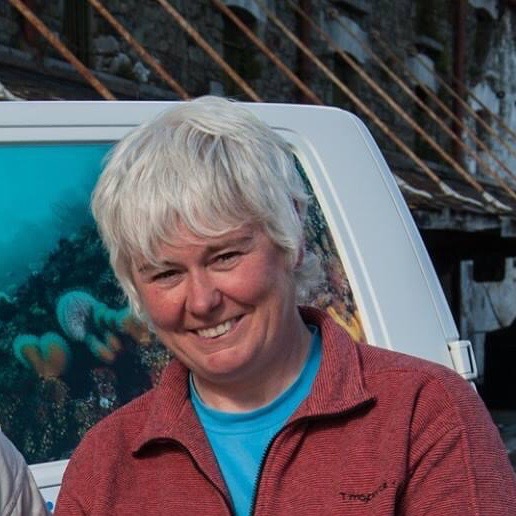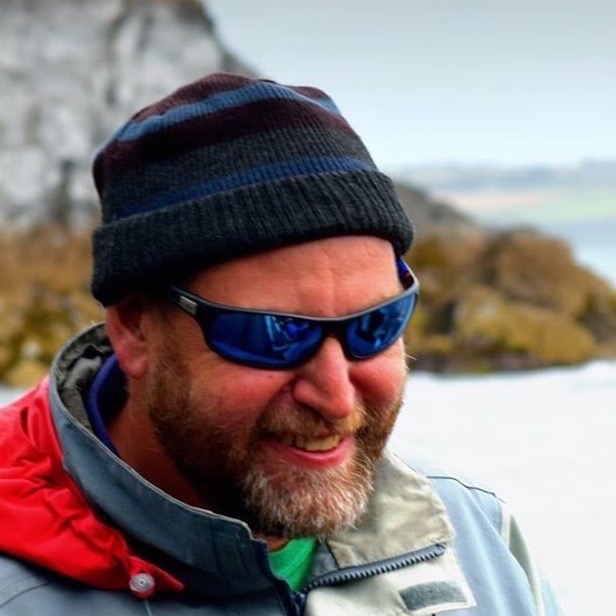Within a short boat spin there are several wonderful dive sites full of life and suitable for all diving experience levels. Because of the warming influence of the Gulf Stream the diving along the south coast of Ireland is unique. Many fish migrate along the Cork coast in the spring and summer time, including basking sharks, giant barrel jellyfish (which feed on plankton and so are harmless to divers) and mola mola or sunfish.
SCUBA DIVING SITES, KINSALE
Scuba Diving in Ireland, more specifically the south Cork coast, is a must because it is home to some of the best dive sites in the world.
DISCOVER DIVE SITESTRACTOR
Leaving Kinsale Harbour, heading east, it is only a short boat spin to the dive site known as the Tractor. So called because many years ago a Tractor fell from the cliffs above into the the sea here. There is not much of the tractor left, just one back wheel. This is not a deep site; max depth is 13m but it is full of life. It is a pottery dive — sandy gullies intertwine between shallow reef. The reef is full of hiding places for many fish and crustations. A torch is a good asset on this dive so you can see into the rocky crevices and identify who owns the eyes peeping back at you!
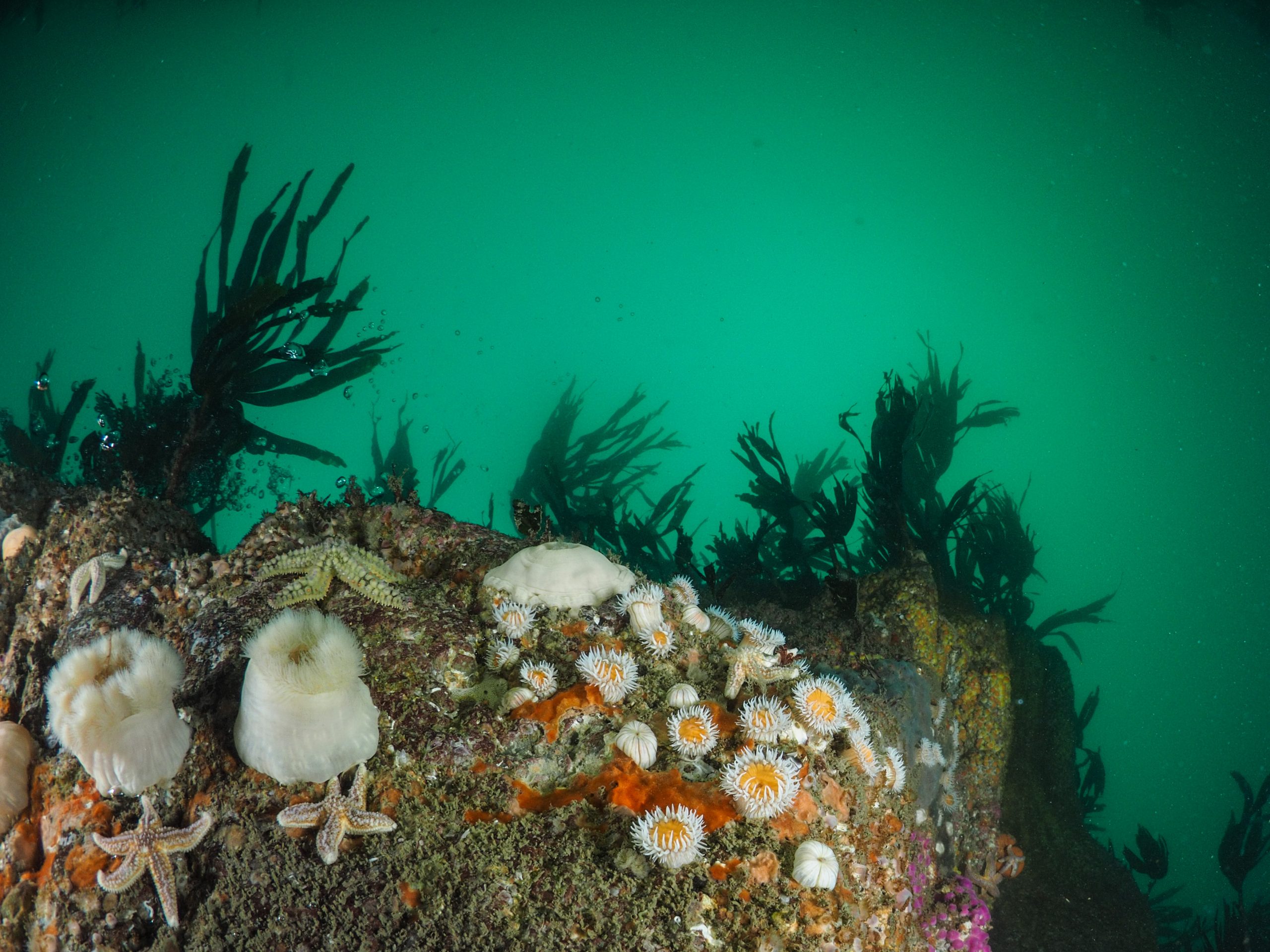
EAST TRACTOR
Just east of the Tractor dive site is the imaginatively named East Tractor. Dropping into just 5m of water, there is a horizontal crack in the rock that is full of blennies, lobster, squat lobster, shrimp, and crabs. In the sand it’s possible to see the little cuttle. Moving south from here you will swim over a kelp forest. Fish species including ballan wrasse, pollack and rock cooks are abundant here, and with shafts of light penetrating from the surface it is like swimming in an aquarium.
At approximately 10m the kelp thins out, giving way to shallow rocky reefs mixed with patches of sand. Cat sharks patrol this area and sometimes, if you are lucky, you can be visited by a friendly seal here who will have some fun playing with your fins. He likes the blue fins. All of this in a very relaxed dive with plenty of interest.
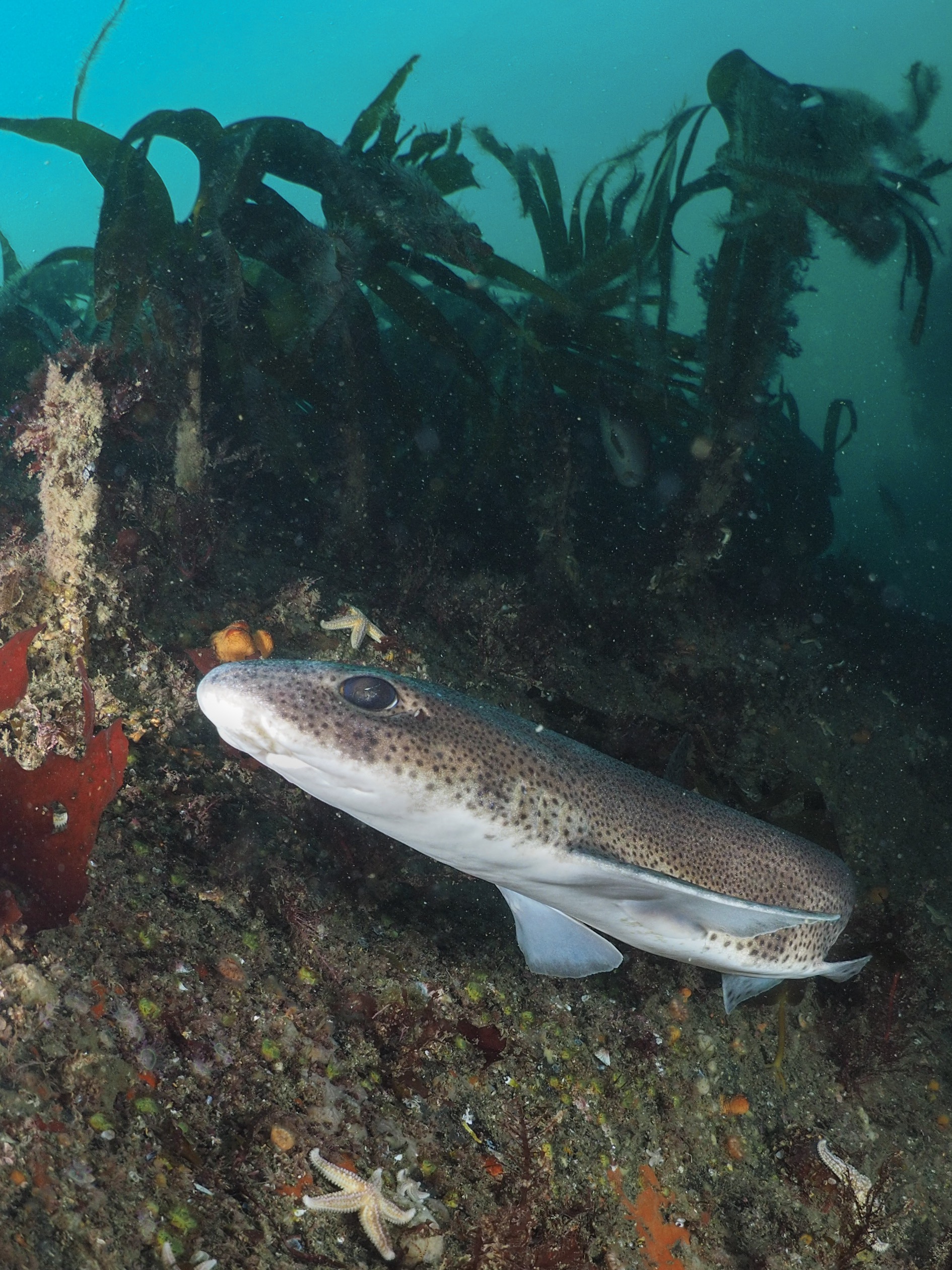
CUASÍN NA DAOINE BOITE
Cuasín na Daoine Boite or the Little bay of the Drowned People was named after a boat called the Stonewall Jackson was wrecked at Hake Head in 1867. It is believed the 24 people including the captain, his wife and son, were lost in the wreck. Their bodies drifted into the little bay beside the headland and resulted in the rather haunting name.
Today the bay is a very safe and sheltered dive site for novice divers. It holds nothing of its grim past and is home to a variety of sea life. The sandy bottom is full of shoals of sand eels and little cuttles. |Juvenile flat fish flutter across the sand. The reef at both sides of the bay are home to blennies, gobies, carps, lobster and shrimp. It is a good site to see nudibranchs as they feed on the hydroids attached to the rocks.
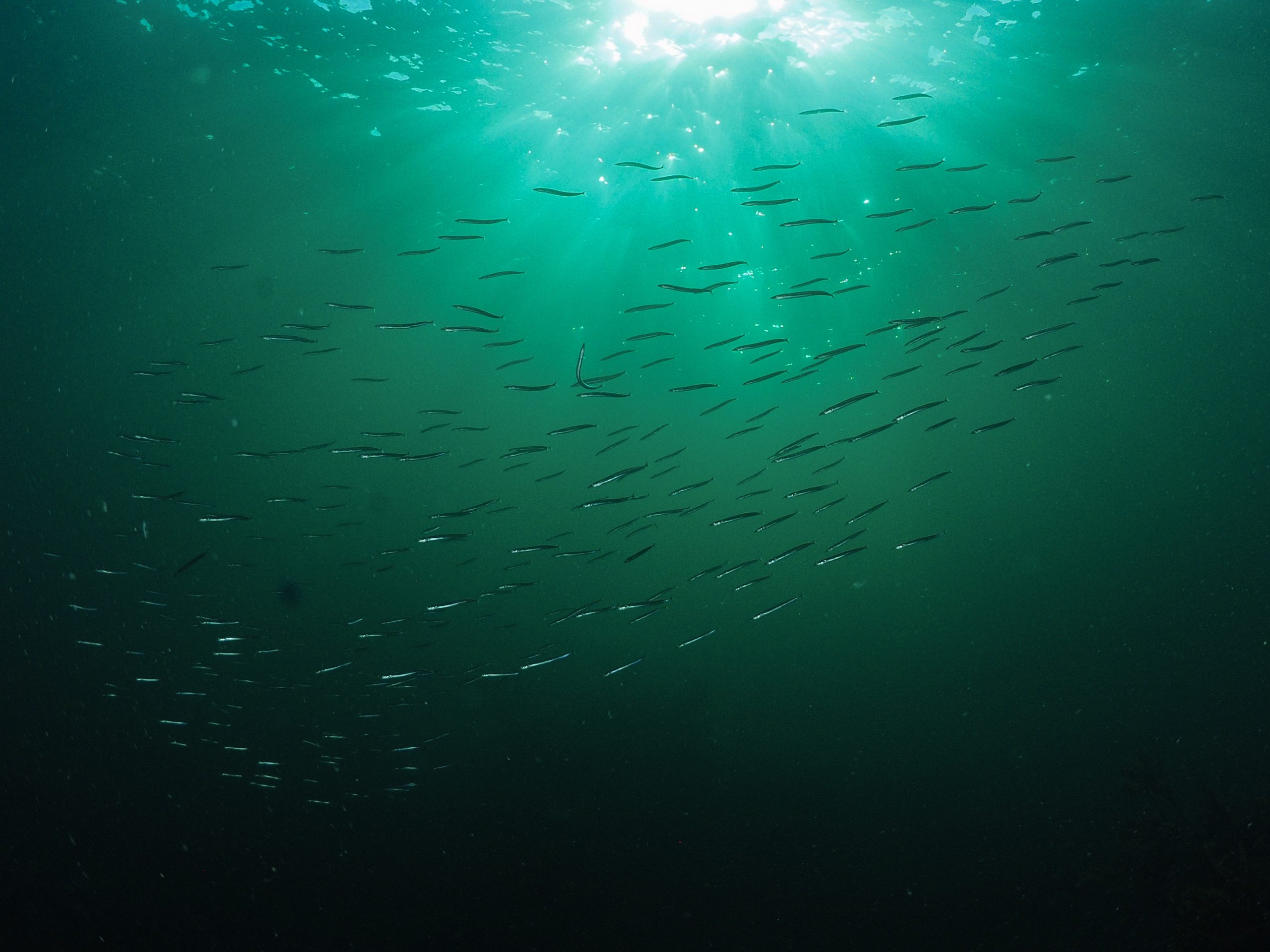
SOVEREIGN ISLANDS
These islands are little more than very large rocks and are located quite close to the shore; they are only a very short boat spin from Kinsale and depths around them are approximately 12-15m. There are two Islands, the Big and the Small Sovereign. The Big Sovereign is a sea bird sanctuary and many sea birds nest on the rock. Diving at the Sovereigns is suitable for all grades of divers.
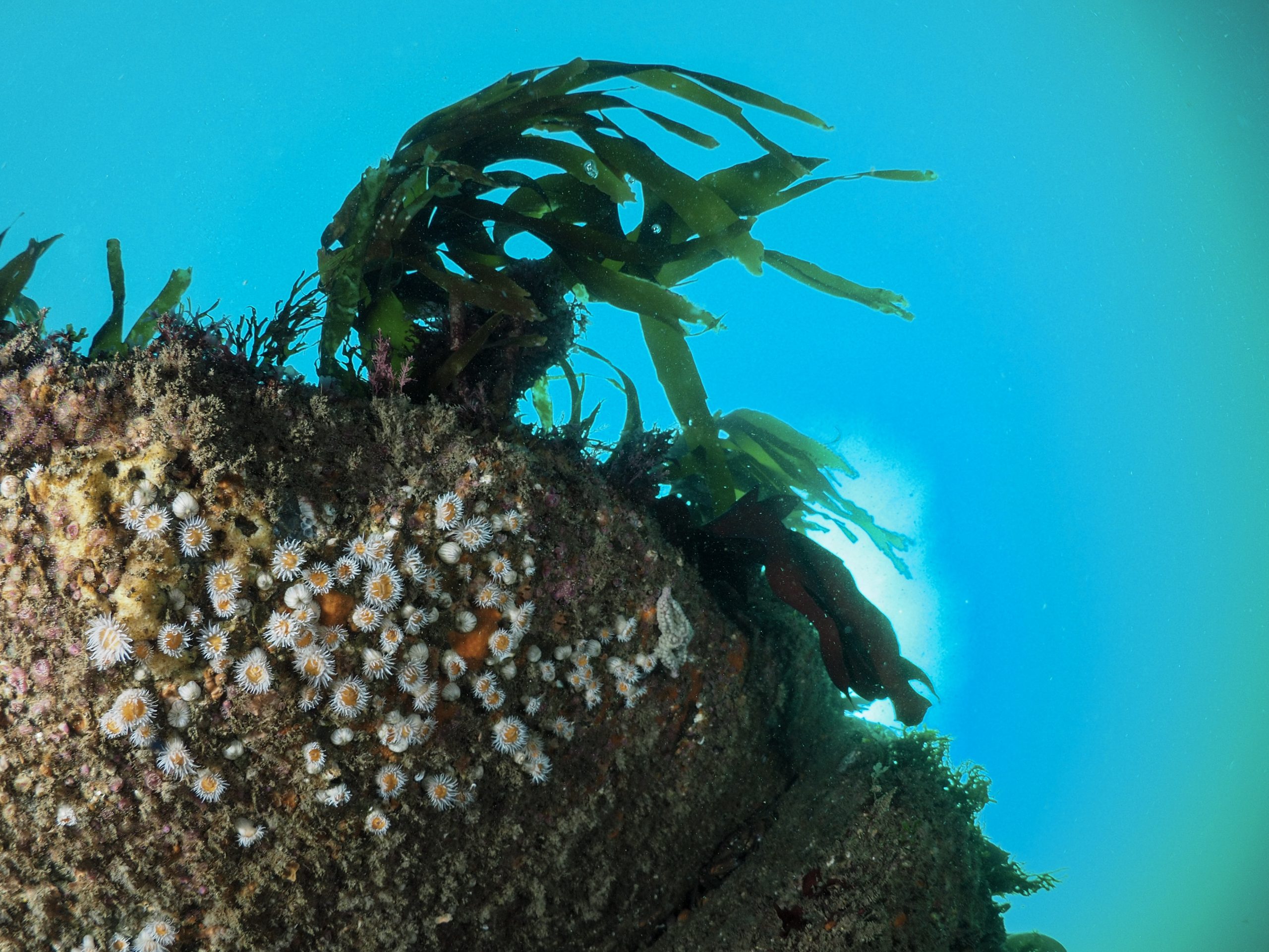
THE NELLIE SOVEREIGN ISLANDS
On the south side of the Big Sovereign is the remains of a Dutch trawler, ‘The Nellie’, which is at a depth of about 15m. The anchor of the Nellie was raised by some local divers a number of years ago and now stands at the top of the slip in Oysterhaven. The Nellie is a lovely wreck dive to potter around and can be enjoyed by divers of all grades. There is an abundance of life on and around it, including many curious blennies.
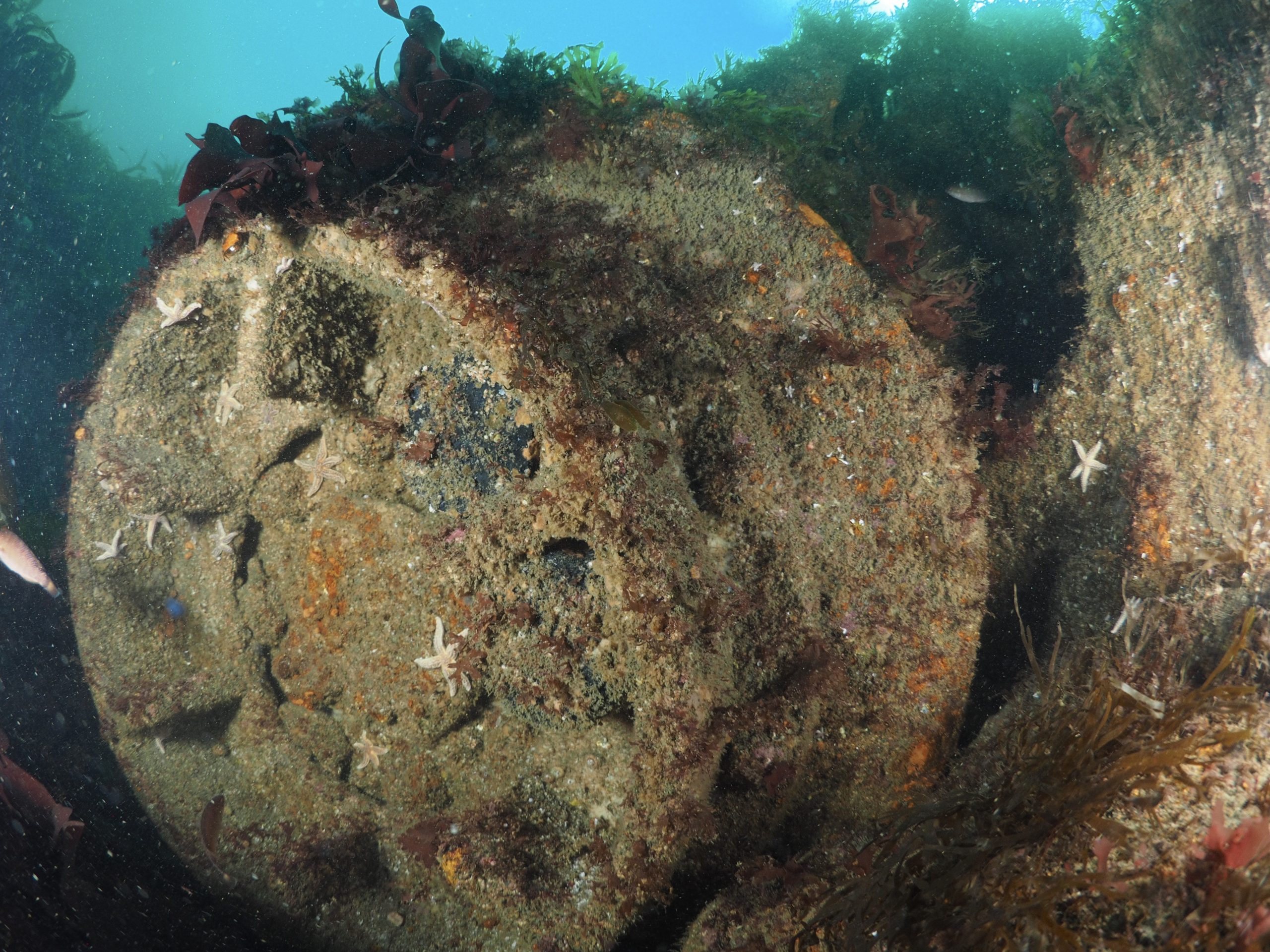
THE GROTTO SOVEREIGN ISLANDS
The nicest dive on the Small Sovereign has to be the Grotto, which is located at the eastern end. It takes a bit of searching for, but once found it makes for a sweet dive. There are amazingly coloured jewel anemones lining the walls at the entrance to it and it’s possible to swim in one end and out the other.
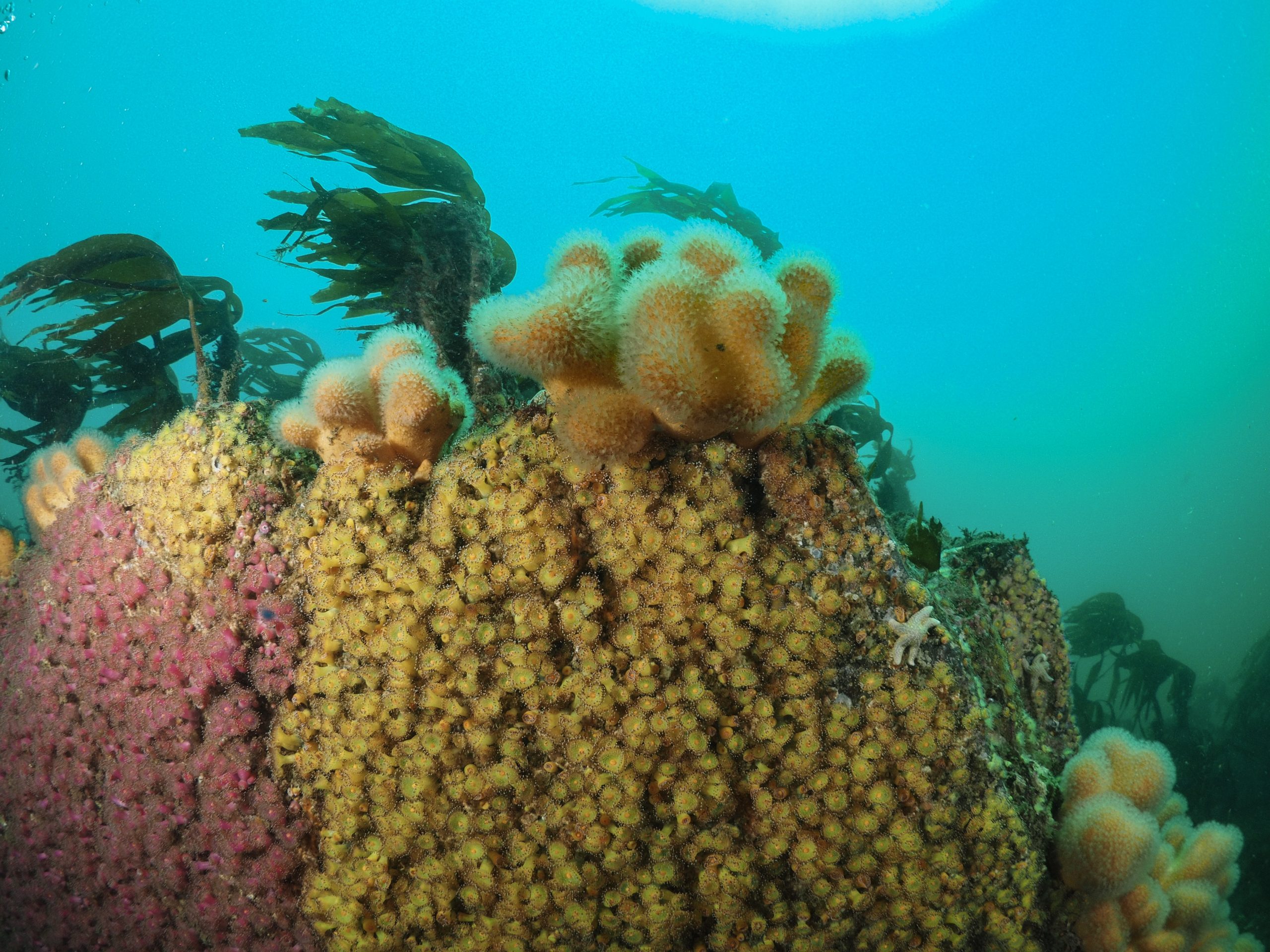
BLACK HEAD
Black Head is the headland inside the Old Head of Kinsale. Maximum diving depths here are 15m but the best of the diving is in approximately 13m. The ground is a mixture of rocky reef and sandy gullies. This is a great sight to spot angler (monk) fish. In the springtime it is possible to see lump suckers here guarding their eggs. Every rock crevice is home to a little critter, though some, like lobsters and congers, are not so little. There is always something different to be seen here and the site is a Mecca for the macro photographer.
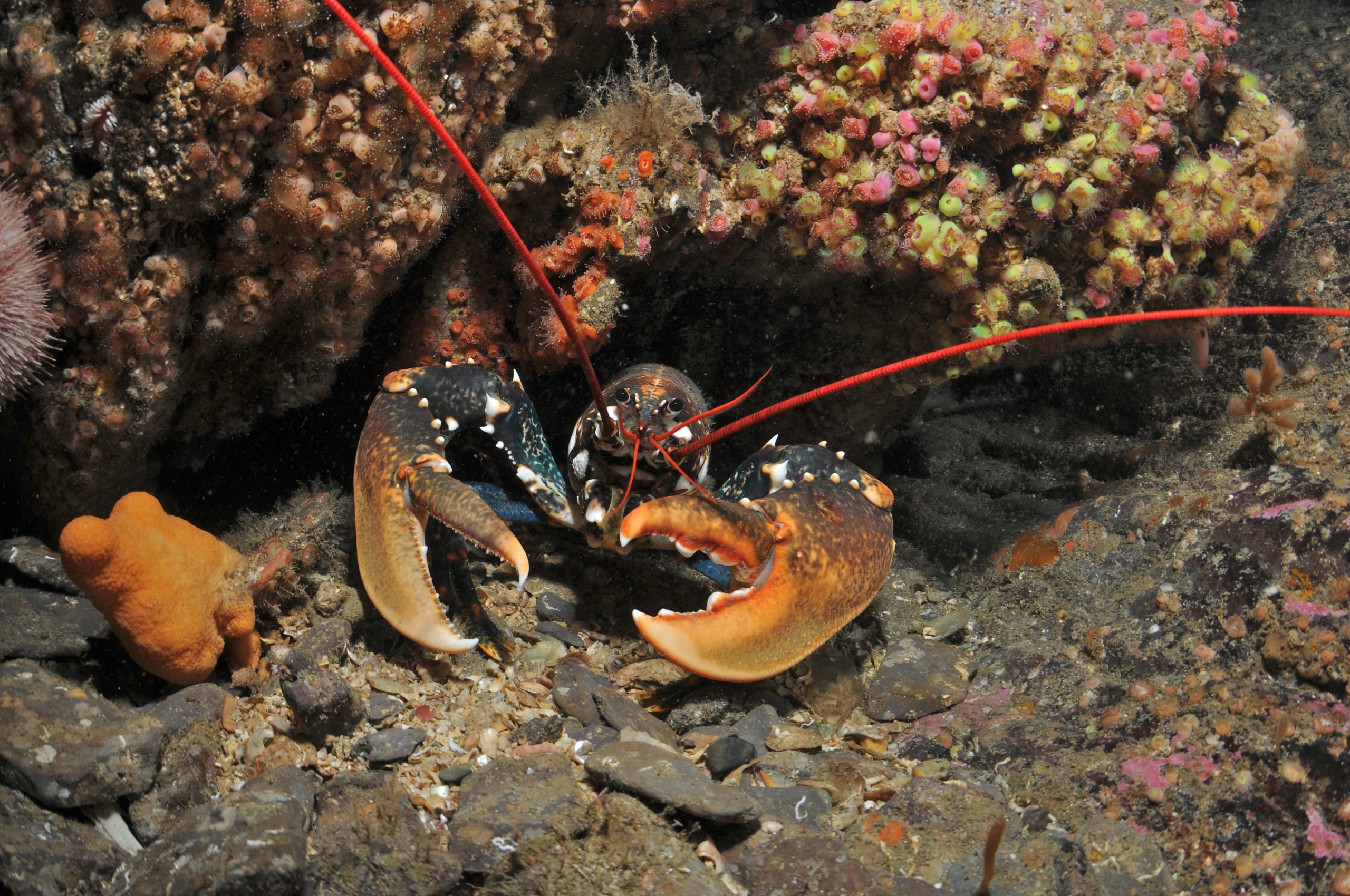
THE CANYON, BLACK HEAD
This is one of the best dives at Black Head. The dive site is divided between narrow passages that open into wider bowl-shaped gullies. The walls of the gullies are carpeted with life; in spring and early summer in particular they are covered with oaten pipes hydroids, which in turn are home to many nudibranchs and offer great opportunities for the photographer. There are some beautiful walls of jewel anemones sporting large blocks of all colour varieties. Larger life you can expect to see here include lobster, crabs, cray and many species of fish.
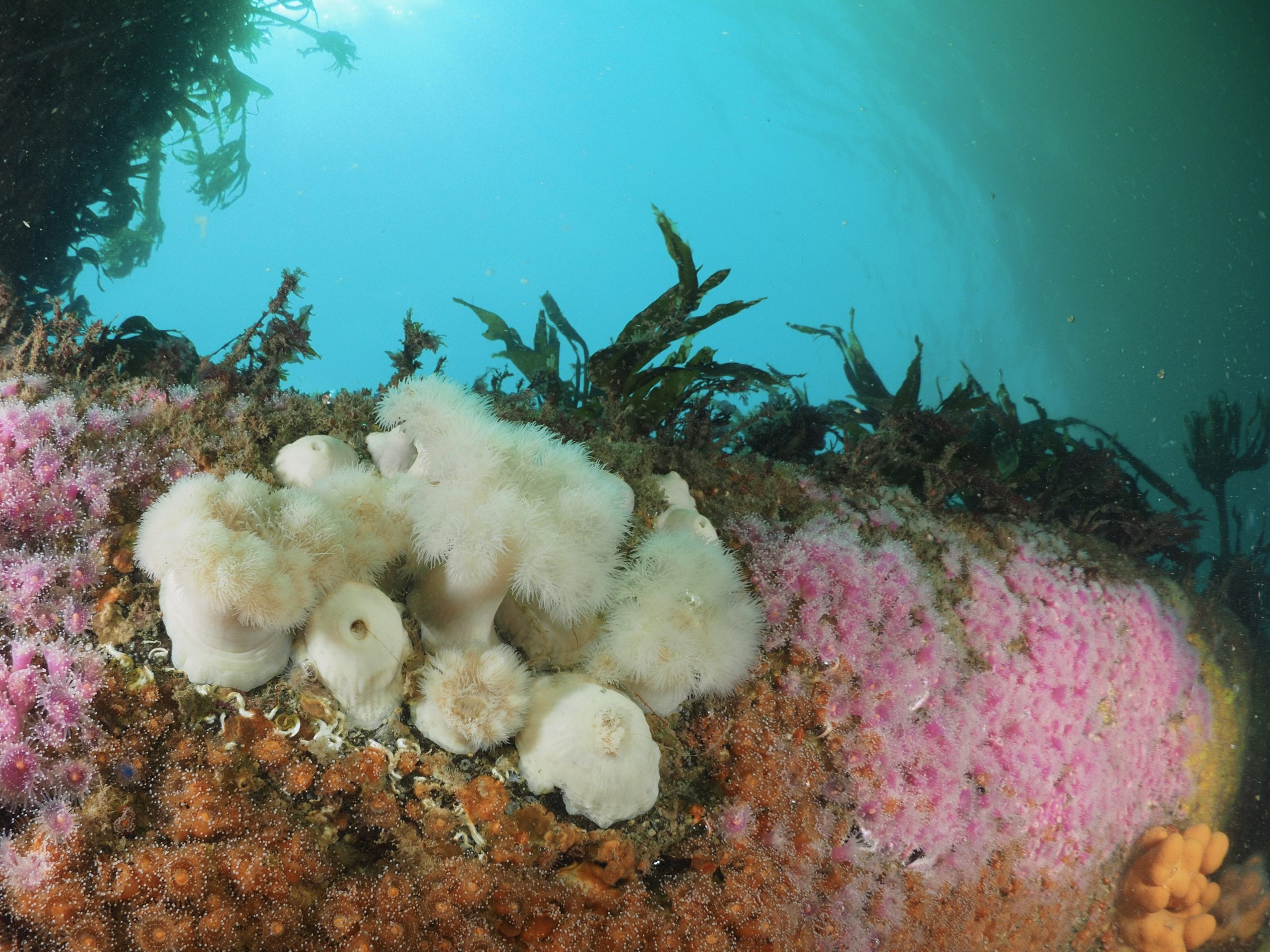
GUN HOLE COVE
Situated under the golf course at the eastern side of the Old Head of Kinsale is the Gun Hole Cove dive site. While there must have been cannons here at some stage, there are no guns remaining today. The dive starts at a spot where steps have been carved into the rock. Divers descend here and follow the reef out to about 15m. There is plenty of life in the reef and it’s one of the best sites to see Devonshire Cup Corals displaying their spectacular colours. Coming back across the sand it’s not unusual to see angler fish lying in wait for their prey to swim past. This is also a dive site frequented by seals and very often they will come to check out the bubble blowing aliens to their world. Their agility and speed is amazing and is only matched by their curiosity and, very often in the case of the young ones, their playfulness as well.
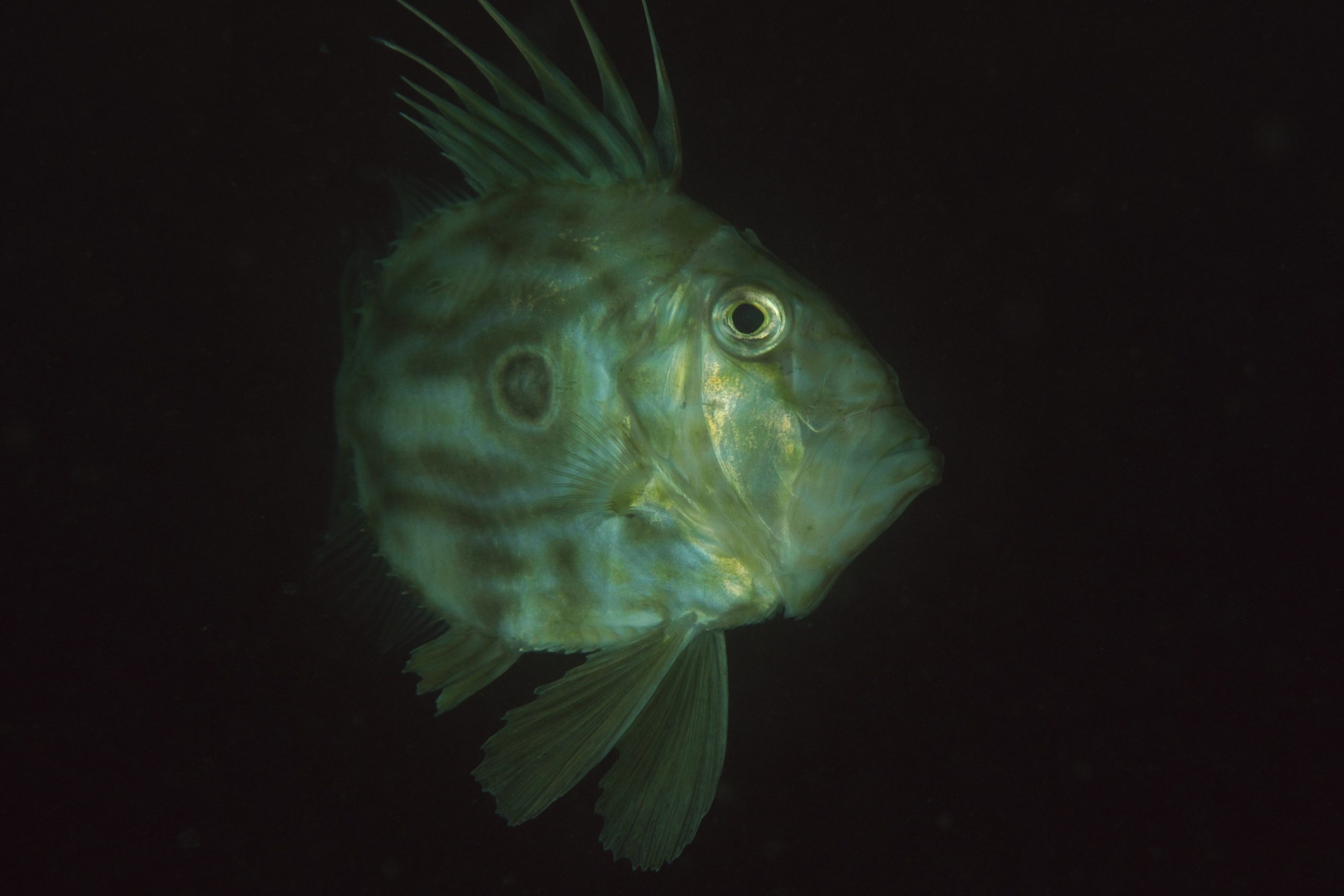
BREAK ROCK
Heading west from Black Head just inside the Old Head of Kinsale is Bream Rock. Bream Rock is a reef starting at 8m going down to 25m. A strong current runs here so this site is best dived at slack water. Because of the strong currents, the reef is a wash of colour with many different types of anemones. The plumose anemones are particularly spectacular here, with all three colour variations on display. Elegant anemones cling to the rocks here, too, along with dahlia anemones and of course the small but beautiful jewel anemone. This is a fantastic site to see nudibranchs with many species on show to eagle-eyed divers. Conger eels and crayfish are common here and very often a seal might check you out. In the springtime lump suckers are often seen guarding their eggs in the shallower part of the reef.
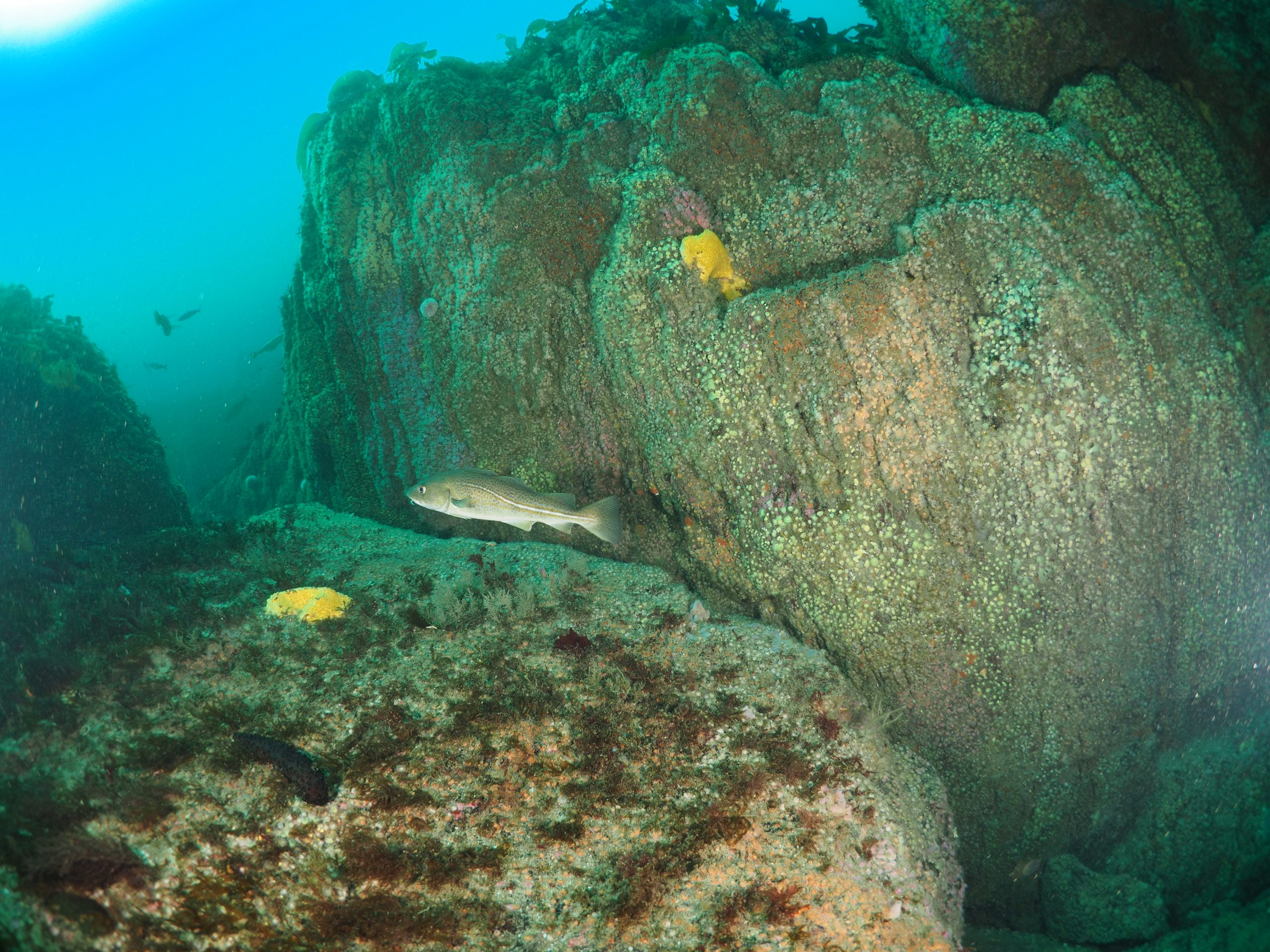
THE CITY OF CHICAGO
The wreck of the City of Chicago lies on the western side of the Old Head of Kinsale, where she hit rocks in heavy fog on 22nd June 1892. She was on route from New York to Liverpool, via Queenstown (now called Cobh). However, while crossing Courtmacsherry Bay, unbeknownst to the captain, the ship was much further north than intended and on a direct collision course with the cliffs of the Old Head of Kinsale. Had they throttled speed sooner and checked the depths, there may have been some chance of saving the liner, but the City of Chicago ran aground on the rocks at Ringagurteen Point. There was no loss of life with all on board making it up the rocky cliff-face to safety.
Today the remains of the ship lie close to the shore at the entrance to a small cave. She is well broken up and there are some very fine swim-through’s in the wreckage which is now covered in marine life. It is also possible to collect golf balls aplenty on the dive, hit there by frustrated golfers having a bad day on the Old Head Golf Course! The depth ranges from 5m to 20m and is suitable for all experience levels.
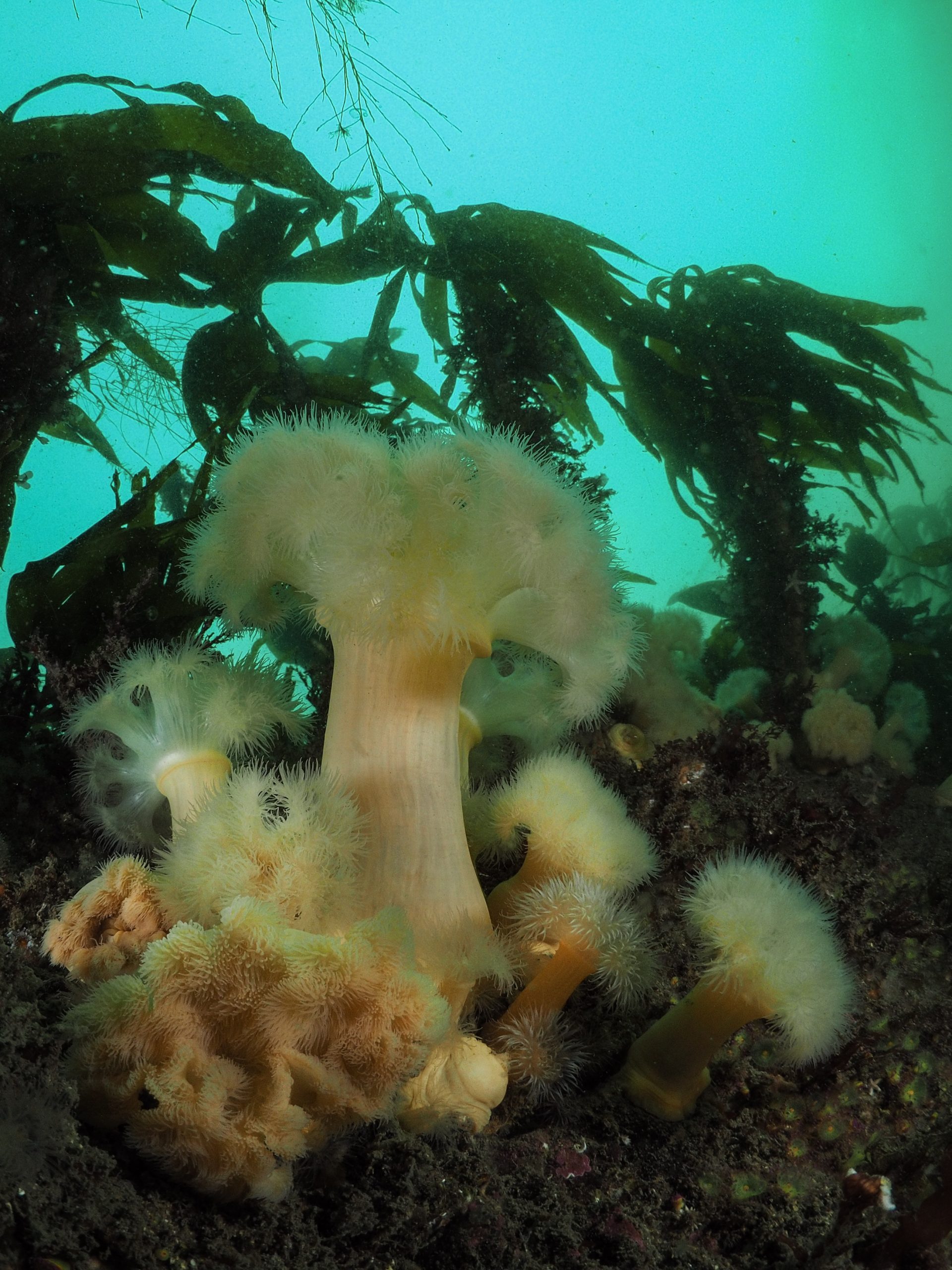
CUAS GORM
Located just under the lighthouse at the Old Head of Kinsale, Cuas Gorm (Blue Bay in English) has lots of interest for the diver. Dropping into about 8m and quickly decending to 16m, the diver is surrounded by some massive boulders.
This is a fantastic spot to see cray fish. This species was once far more common on Irish coasts but its numbers have dropped by up to 50% in the last 30 years and it is now classified as vulnerable on the IUCN Red List. Here to we see Ballan wrasse, the largest of the Irish wrasse species. Ballan wrasse have incredibly strong teeth which they use to pull molluscs and barnacles off the rocks, before extra teeth in their throats crush shells and finish the job. Sometimes the Ballan wrasse will be surrounded by smaller rock cooks, who clean it of its parasites.
Leaving the boulders and keeping the reef on your right, there are many cracks and crevices in the wall, all giving shelter to small bennies, gobies and shrimp. At the end of the wall there is a small cave with a sandy floor and very often there are shoals of sand eels here and if you are sharped-eyed you can find the little cuttle fish (Sepiola atlantica).
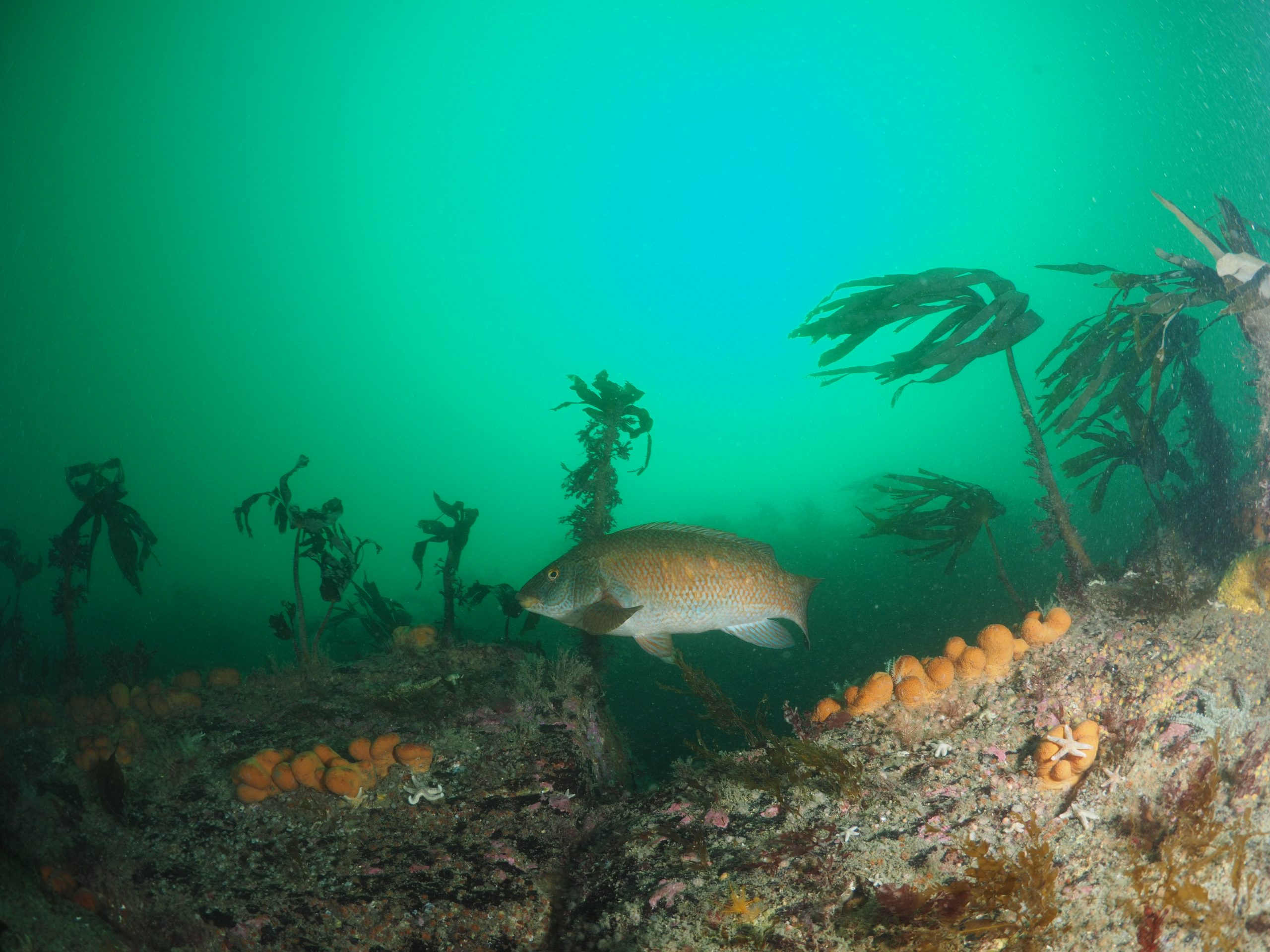
DUTCH GOLD
Moving west from Cuas Gorm we have a fantastic dive site called Dutch Gold. The first time we dived this site was an exploratory dive with some visiting divers form The Netherlands. When they surfaced they said that it was a gold medal site and we decided there and then to name it Dutch Gold.
There are two ways to dive this site.
If you are looking for a bit of depth, you can drop into 25m where the ground is gravel, but as you head shallower you will very quickly encounter massive boulders. Living among these boulders are lobsters, cray fish, conger eels, shrimp and many species of fish. Many species of colourful anemones cling to the rocks along with sponges, hydroids and bryozoans. If you look closely there are many nudibranchs here too, once you get your eye in you will see plenty of them.
If you prefer to stay shallow, you can drop in close to the rocks into 8m and there is no need to move very far at all as there is so much to explore here that it will take more than one dive see it all.
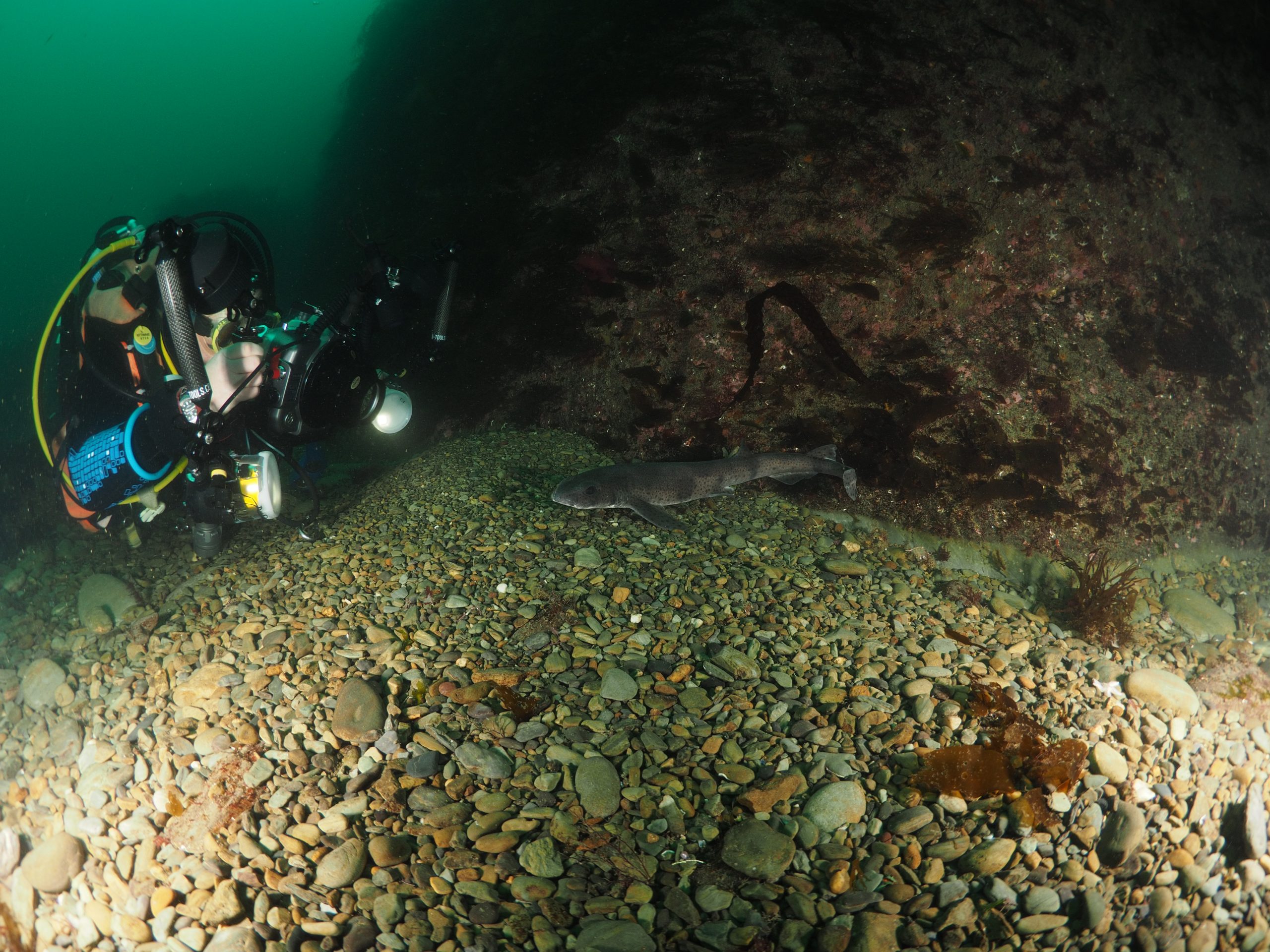
THE LING ROCKS
The Ling Rocks are located 9km south-southeast of Kinsale. The rocks are not exposed on the surface; rising from the sea bed, the shallowest point is at about 22m at low water. The depths around the rocks go down to 70m.
Because of the offshore location, depth and possibility of some current, this is a dive for the experienced diver, and one that holds many rewards.
The colours of the anemone-encrusted walls include all points of the colour wheel. There are several different types of anemones here such as jewels, dahlias, plumose and many more. There are bigger creatures living here too, including various creepy crawlies in the form of lobster, cray, squat lobster, brown crab and spider crab to mention a few. Sizeable conger eels lurk in the many crevices in the rock. All around the rocks there are shoals of fish – whiting, hake, pollack, wrasse – and of course the site isn’t called the Ling Rocks for nothing! There are plenty of ling, too.
The Ling Rocks is a fantastic scenic dive and is right up there among the must-do dives in your diving in Ireland schedule.
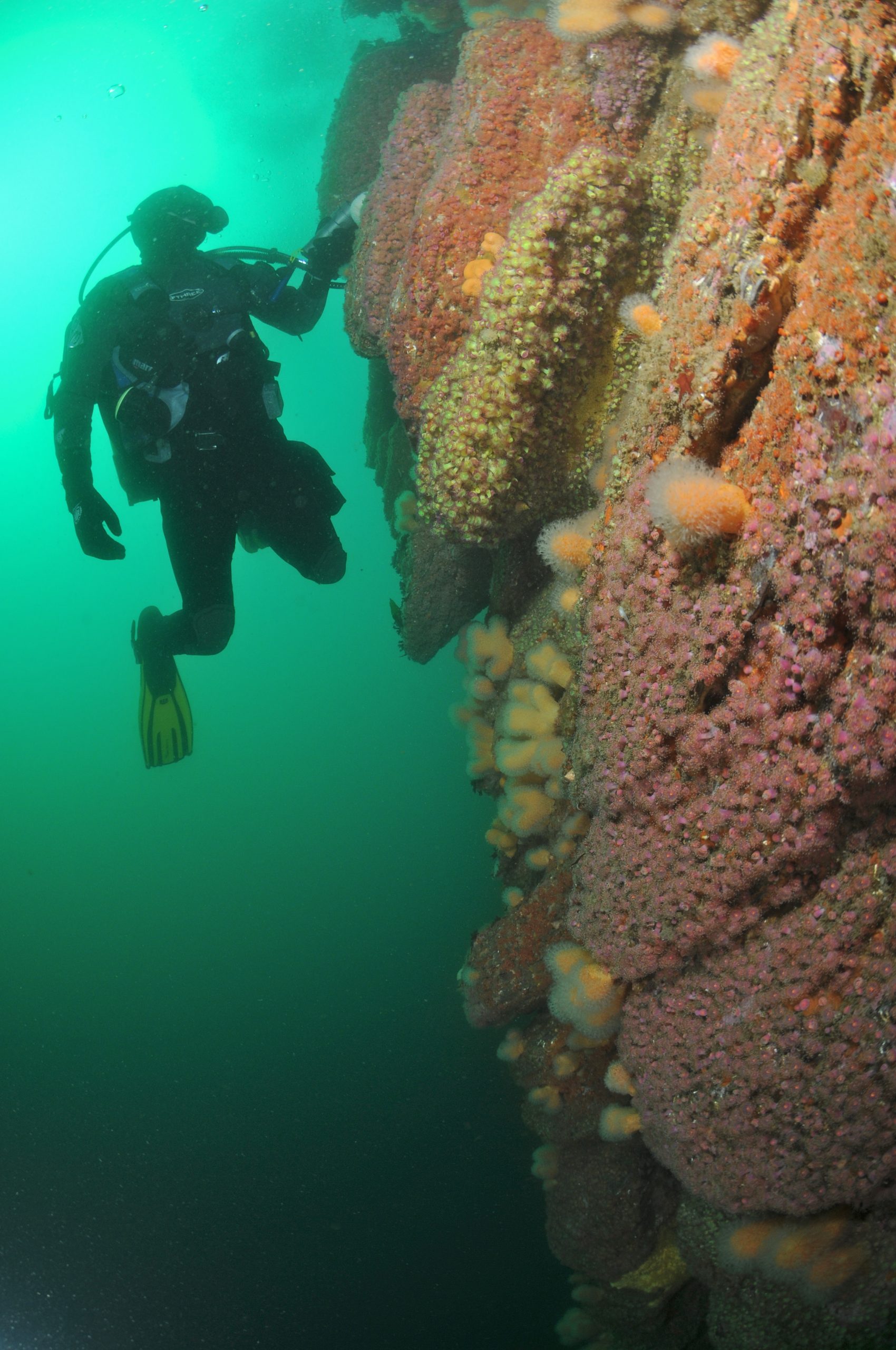
EXPERIENCES & TRAINING
STAY UP TO DATE
Stay up to date with Oceanaddicts sign up to receive our newsletter.
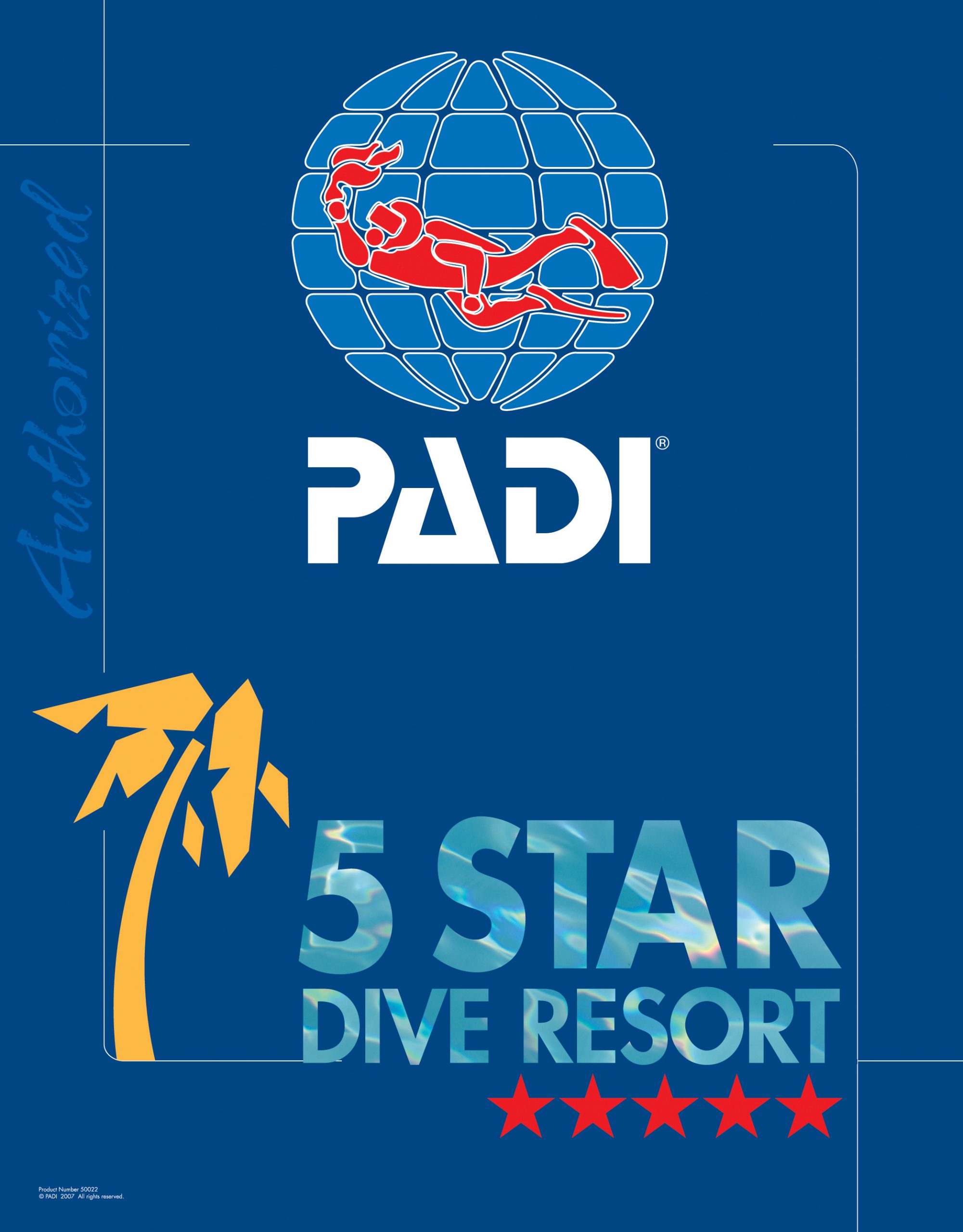
PADI 5 STAR DIVE RESORT CERTIFIED
Our policy is to provide services that exceed our customers’ expectations of quality and service. You are in safe hands with our experienced staff who will look after your welfare while you are on board with us.

STAY SAFE AND SUPPORT LOCAL
All our boats are licensed by the Department of Transport, conform to the highest safety standards and are fully insured. The dive boats carry emergency medical oxygen and a marine first aid kit.





